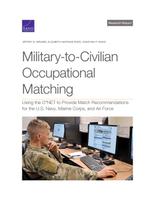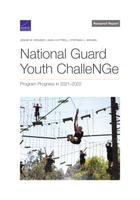Decades of defense manpower analyses by the Personnel, Readiness, and Health Program (PRH) (formerly the "Forces and Resources Policy Program") have helped military leaders manage recruiting and retention crises, the transition to an all-volunteer force, the post–Cold War drawdown, and the post–9/11 buildups. PRH's ongoing projects in many areas—including the career development of military and civilian personnel; individual and unit readiness; family support, reintegration, and quality-of-life programs; and military health policy—are broadly applicable to U.S., allied, and partner forces.
Personnel Management
To ensure that defense personnel remain highly capable and present the right mix of skills across the military, civilian, and contractor workforces, personnel managers need to recruit, train, retain, and justly compensate high-performing personnel while offering opportunities for advancement. PRH assesses the cost-effectiveness of current policies and the need for changes to meet personnel requirements amid a growing demand for specialized skills.
Readiness
U.S. and allied forces face growing conventional threats in Europe and the Pacific region, even as they continue to confront terrorism. Commanders need to ensure that individuals and units are ready to meet varied but uncertain mission demands, often requiring expanded combat capabilities as well as linguistic and cultural skills. PRH projects address all aspects of force and individual readiness, encompassing unit readiness and data reporting, force education and training, personnel readiness and safety, and force resiliency.
Support Services and Programs
Defense manpower experts know that "service members enlist, but families reenlist." An extensive set of services — such as education, spousal employment, and quality-of-life programs — are believed to enhance satisfaction with military life and encourage families to "reenlist." Additional services provide support to active and reserve servicemembers transitioning to the civilian labor market from military service. PRH research teams investigate how to improve these services, how to fill unmet needs, and how to determine which services are most cost-effective.
Health Services and Systems
If the costs associated with operating military health systems continue to rise, the costs will claim a steadily growing share of overall defense budgets. Among the factors at issue are beneficiary cost-sharing arrangements and the costly practices of health care providers. Much can be learned from health system reforms in the private sector. PRH analysts explore the policy options available for managing access, quality, and costs in military health and mental health care systems.


